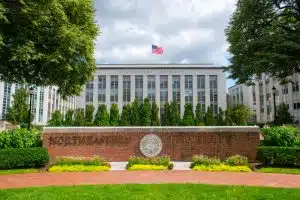Exploring Stanford’s Unique Traditions
Stepping onto the campus of Stanford University, one enters a world steeped not just in academic rigor and innovation but also in rich traditions. These traditions paint a vivid picture of the university’s history, its values, and the vibrant campus culture. Stanford’s practices truly bring the university to life, from academic ceremonies to athletic rituals to social events and so much more.
Understanding the Importance of Traditions at Stanford
The Role of Traditions in Campus Life
At Stanford, traditions are more than habits repeated year after year. They are crucial to the overall experience of attending the institution, offering a sense of continuity and shared experience. These rituals help bind diverse cohorts of students together, fostering unity, camaraderie, and a sense of identity among Stanford’s community.
One of the most cherished traditions at Stanford is the annual “Big Game” against the University of California, Berkeley. Dating back to 1892, this football rivalry symbolized Stanford’s competitive spirit and determination. The week leading up to the game is filled with excitement and anticipation, with students participating in various activities and events to support the Cardinal team.
Another tradition that holds a special place in the hearts of Stanford students is “Full Moon on the Quad.” This event, held during the first full moon of the academic year, celebrates love and romance. It is a time when students gather on the Main Quad to engage in a tradition of kissing under the moonlight. This unique and whimsical tradition brings students together and adds a touch of magic to the Stanford experience.
Moreover, traditions at Stanford play a significant part in maintaining the university’s ethos. They serve as a reminder of the values upon which the institution was founded and help keep that spirit alive in the present day.
How Traditions Shape Stanford’s Identity
Traditions play an instrumental part in shaping the overall identity of Stanford University. They help define what it means to be a part of the Stanford community and distinguish the university from other institutions within the sphere of higher education. Through these beloved customs, Stanford retains its unique character and charm.
One of the most iconic traditions that shape Stanford’s identity is the “Wacky Walk” during graduation ceremonies. As graduates walk across the stage to receive their diplomas, they showcase their individuality by wearing outrageous costumes and performing silly antics. This tradition reflects Stanford’s celebration of creativity, innovation, and non-conformity.
These traditions also aid in shaping the university’s reputation. Unforgettable events such as the Band Run and the Full Moon on the Quad are widely recognized as emblematic of Stanford’s innovative, spirited, and community-oriented culture. The Band Run, for instance, is a lively parade where the Stanford Band marches through campus, entertaining students and spreading school spirit. This unique tradition has gained national attention and symbolized Stanford’s vibrant and unconventional approach to education.
Furthermore, traditions like “Maude Dinner” and “Viennese Ball” contribute to Stanford’s reputation for fostering a strong sense of community. Maude Dinner is a longstanding tradition where students gather for a formal candlelit dinner in the dormitories, fostering connections and friendships. The Viennese Ball, on the other hand, is a grand social event that brings together students, faculty, and alumni for an evening of music, dancing, and elegance. These traditions showcase Stanford’s commitment to creating a supportive and inclusive student environment.
Ultimately, this iconic symbolism aids in affirming Stanford’s status as a world-class institution. The traditions at Stanford not only create lasting memories for students but also contribute to the university’s rich history and legacy. They serve as a reminder of the vibrant and dynamic community that thrives within the campus, and they continue to shape the identity of Stanford University for generations to come.
A Deep Dive into Stanford’s Historic Traditions
The Origins of Stanford’s Traditions
Many of Stanford’s traditions have deep historical roots, dating back to the university’s founding. The annual Founder’s Celebration, for instance, is a tradition that commemorates the establishment of the university in honor of Leland and Jane Stanford’s son, Leland Stanford Jr. The ceremony involves the campus community and reflects the institution’s history and legacy.
During the Founder’s Celebration, the Stanford community comes together to pay homage to the visionaries who laid the foundation for this esteemed institution. The event is marked by thought-provoking lectures, engaging panel discussions, and captivating exhibitions showcasing the university’s rich heritage. Students, faculty, and alumni gather in the historic Memorial Church, where they are reminded of the university’s humble beginnings and the tremendous progress it has made.
Another long-standing tradition is the Senior Class Plaque. Each graduating class presents the university with a plaque bearing their class year, leaving a physical imprint of their time at Stanford. This symbolizes the enduring relationship between the university and its alumni.
The Senior Class Plaque holds a special place in the hearts of Stanford graduates. It serves as a tangible reminder of their transformative journey through academia and their lifelong bond with their alma mater. The plaques, meticulously crafted and displayed in a dedicated hall on campus, create a sense of unity and pride among the Stanford community. As new plaques are added each year, the gallery becomes a living testament to Stanford’s alumni’s collective achievements and aspirations.
The Evolution of Traditions Over the Years
While many of Stanford’s traditions are steeped in history, they have not remained untouched by time. For example, the Wacky Walk, a pre-commencement procession of students in fun, often outrageous costumes, has transformed from a standard academic procession into one of the most colorful, dynamic, and anticipated events on the academic calendar.
The Wacky Walk, initially a lighthearted way for students to relieve pre-graduation jitters, has evolved into a vibrant display of creativity and individuality. Students now spend weeks brainstorming and designing their costumes, aiming to outdo the previous year’s participants. Once a simple walk, the procession has turned into a lively parade, complete with music, dance, and theatrical performances. It has become a cherished tradition showcasing Stanford’s student body’s unique spirit and vitality.
Moreover, new traditions are frequently born out of Stanford’s changing cultural, social, and academic landscape. This willingness to introduce fresh practices reflects the university’s commitment to innovation and progress while respecting its rich past.
One such recent addition to Stanford’s traditions is the “Cardinal Cook-Off,” an annual culinary competition that brings students, faculty, and staff together to showcase their cooking skills. Inspired by the diverse culinary traditions in the Stanford community, this event celebrates the university’s commitment to inclusivity and cultural exchange. Participants whip up their signature dishes, offering a taste of their heritage and personal stories through food. The Cardinal Cook-Off has quickly become a highly anticipated event, fostering a sense of community and appreciation for the diverse backgrounds that make up the Stanford family.
As Stanford continues to evolve, it remains dedicated to preserving its cherished traditions while embracing new ones. These traditions not only connect generations of Stanford affiliates but also serve as a reminder of the university’s unwavering commitment to excellence, innovation, and community.
Stanford’s Academic Traditions
Stanford University is renowned for its rich academic traditions that add depth and meaning to the student experience. These traditions span the entire academic year, from the beginning to the end, and are cherished by students, faculty, and alumni.
Unique Rituals in Stanford’s Academic Calendar
The academic year at Stanford is rife with memorable traditions that create a sense of unity and excitement among the student body. One of the most significant events is the Convocation ceremony, which marks the official start of a student’s journey at Stanford. During this ceremony, a grand procession of faculty members, accompanied by incoming first-year and transfer students, fills the campus with a palpable sense of anticipation and possibility.
Central to the Convocation tradition is the President’s Address, a momentous speech by the university’s president. In this address, students are encouraged to embrace knowledge, explore diverse fields of study, and seize Stanford’s countless opportunities. The President’s Address sets the tone for the academic year, inspiring students to embark on their educational journey enthusiastically and determinedly.
On the other end of the academic journey, the Commencement ceremony stands as a crowning moment of achievement and celebration. This grand procession, marked by the elegant display of academic regalia, is a sight to behold. Graduates, accompanied by their families, friends, faculty, and mentors, gather to receive their hard-earned degrees and commemorate their accomplishments.
Traditions in Stanford’s Academic Departments
While Stanford’s academic traditions are awe-inspiring, each academic department also contributes unique customs and rituals. These departmental traditions further enrich the student experience and foster a sense of belonging within specific fields of study.
For instance, in the School of Engineering, an annual tradition known as the Primal Scream takes place during the intense period of finals week. This tradition provides students with a much-needed outlet for stress relief. As the clock strikes midnight, students gather in a designated location and release a collective scream, symbolically letting go of their academic pressures. This cathartic experience not only unites engineering students but also serves as a reminder of the importance of self-care and mental well-being.
In the English department, a captivating tradition known as the Stanford Storytelling Project takes center stage. This annual public reading event showcases students’ and faculty’s immense talent and creativity as they narrate spellbinding stories to a captivated audience. The power of storytelling is celebrated, and the event serves as a platform for individuals to share their unique perspectives and experiences. The Stanford Storytelling Project fosters a sense of community within the department and highlights the profound impact of literature and narrative in our lives.
These university-wide and department-specific traditions encapsulate Stanford’s spirit and contribute to its unique academic culture. They create lasting memories, forge connections between students and faculty, and remind them of the transformative power of education.
Stanford’s Social and Cultural Traditions
Stanford’s Traditions of Inclusion and Diversity
Stanford is keen on fostering a diverse and inclusive campus environment, and this commitment is reflected in its traditions. The multicultural Springfest event showcases the richness of Stanford’s international student community through cultural performances, global cuisine, and displays of traditional garments.
Moreover, Stanford annually hosts the Dance Marathon, a charity event that raises funds for global health issues. Preparing dances representing their culture, students celebrate diversity while contributing to a noble cause.
Celebrations and Festivals: Stanford’s Social Traditions
Stanford’s social life is marked by numerous traditions that keep the campus buzzing. The annual “Full Moon on the Quad” event is a widely anticipated party where students gather to exchange roses, serenades, and kisses under the full moon. This celebration, dating back to the 1800s, is now marked with live music, food, and fun.
Another beloved tradition is “Fountain Hopping,” where students visit and wade in various campus fountains on warm days. These social traditions bring fun, relaxation, and a sense of unity among students amid academic life.
Traditions in Stanford Athletics
Game Day Rituals and Traditions
From crowd chants to rituals, Stanford’s athletic traditions further cultivate a sense of camaraderie and instill spirit in the university community. Game days commence with the “Walk,” a pre-game ritual with the Stanford Band leading fans and players in a parade to the stadium, playing lively music that resonates across the campus.
Another game day staple is “The Axe,” a coveted trophy in the year-long athletic rivalry between Stanford and UC Berkeley. These traditions serve as a source of school spirit and foster a strong sense of unity among students, faculty, alumni, and fans alike.
Stanford’s Athletic Traditions and Their Significance
Stanford’s athletic traditions play a significant role in promoting sportsmanship and unity. They rally the community around common causes, fostering pride and school spirit and creating shared experiences. The traditional “Big Game” Bonfire, where students and staff gather to kick off the annual football game against arch-rival UC Berkeley, exemplifies such unity.
Moreover, these traditions enhance the spectator experience. Derby Days, where student organizations compete in various events for charity, and the half-time performances of the irreverent, student-run Stanford Band add excitement and entertainment to the games. These traditions make Stanford athletics a captivating spectacle, creating a sense of belonging and camaraderie beyond the playing field.
If you want to discuss the matter to a greater extent or inquire about college admissions, look no further! Our experts here at AdmissionSight can help you! Here at AdmissionSight, we have over a decade’s worth of experience guiding students through the competitive admissions process to get accepted to the top universities in the world. Feel free to set up an appointment today to book your initial consultation.








































